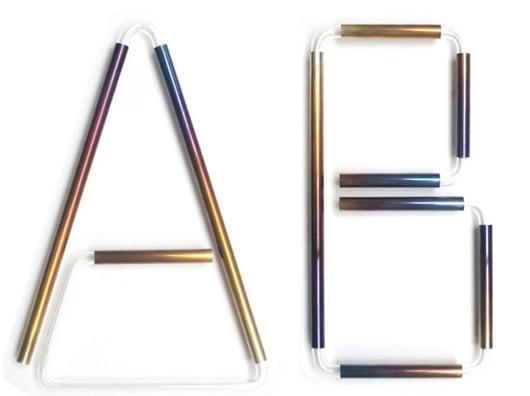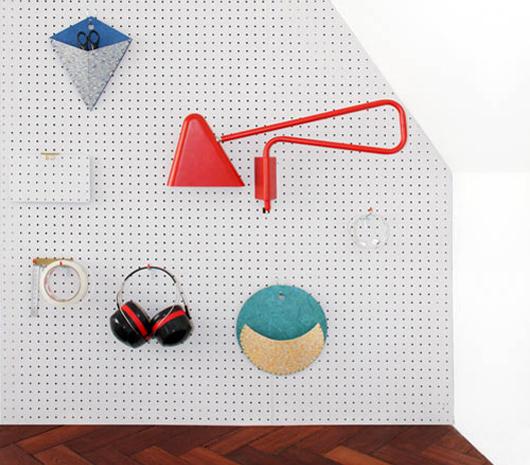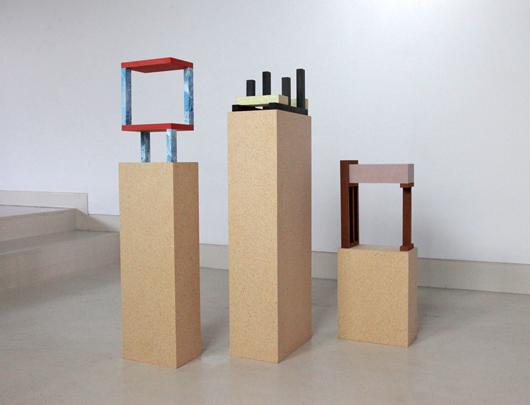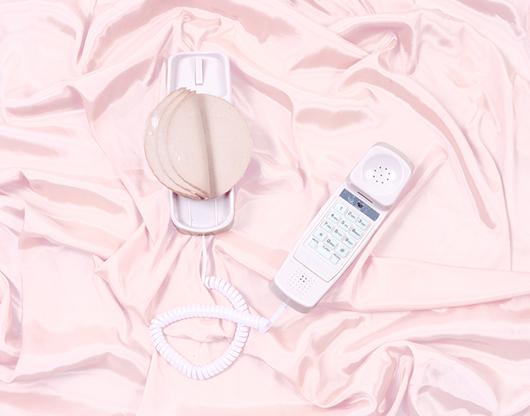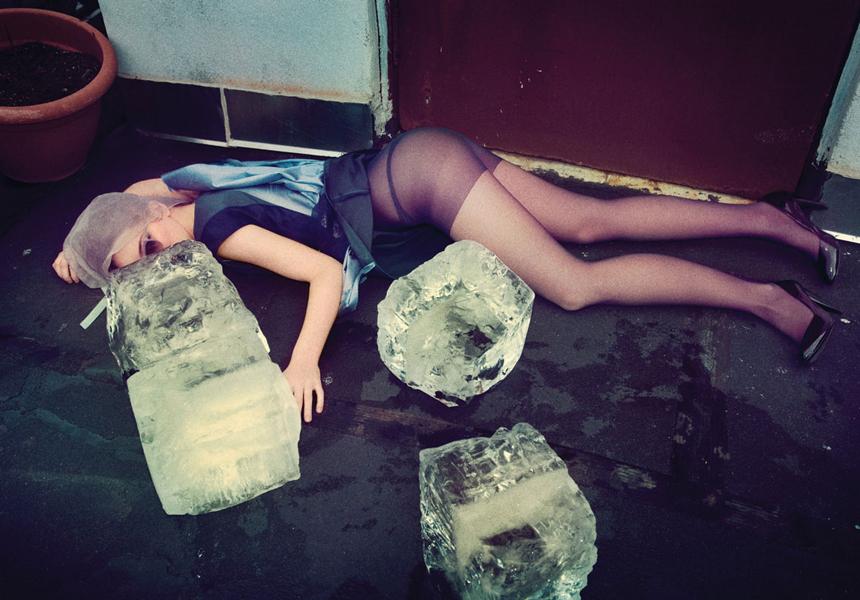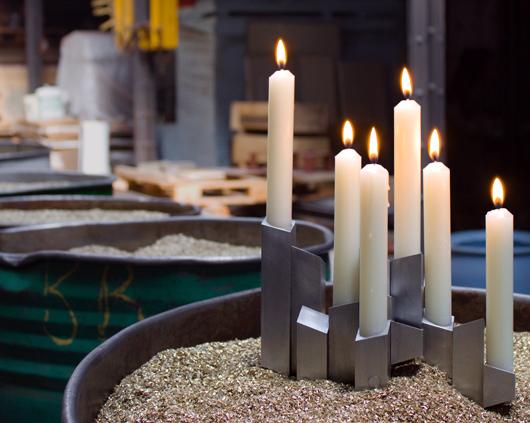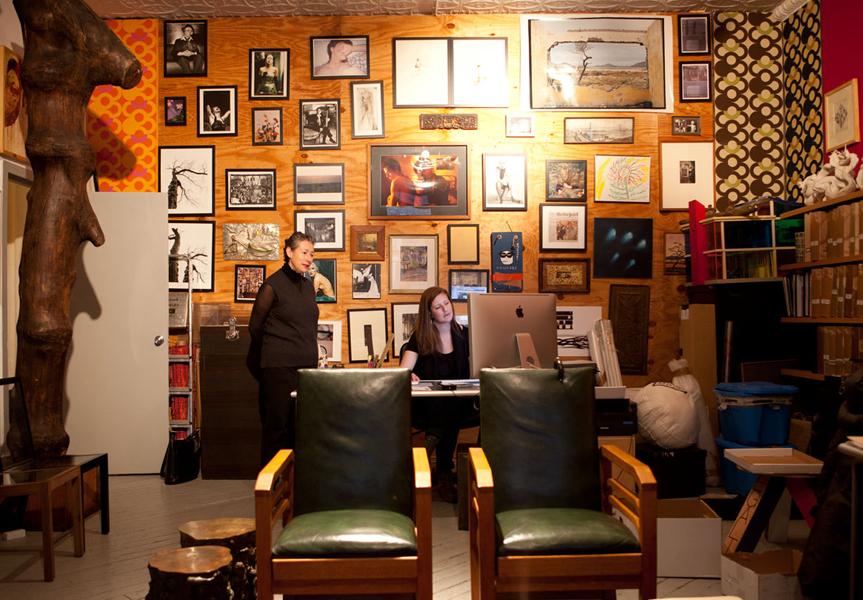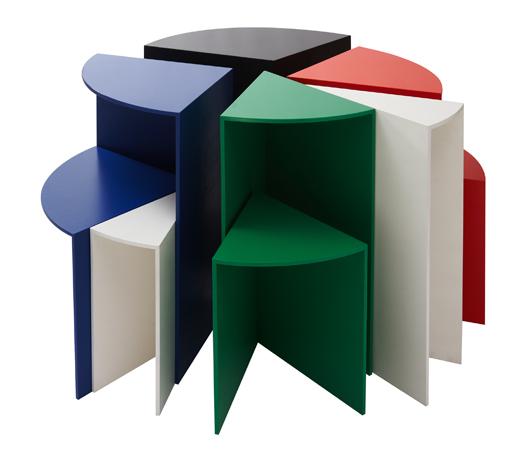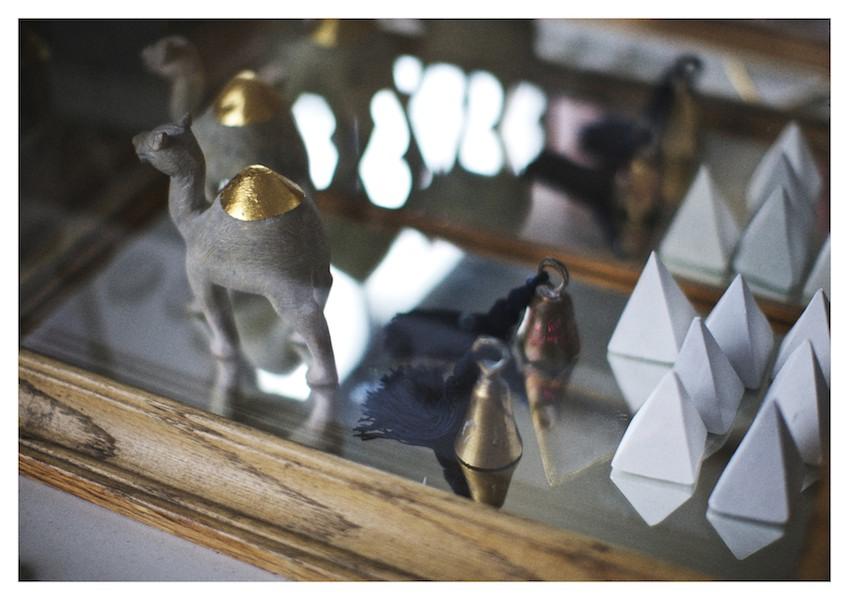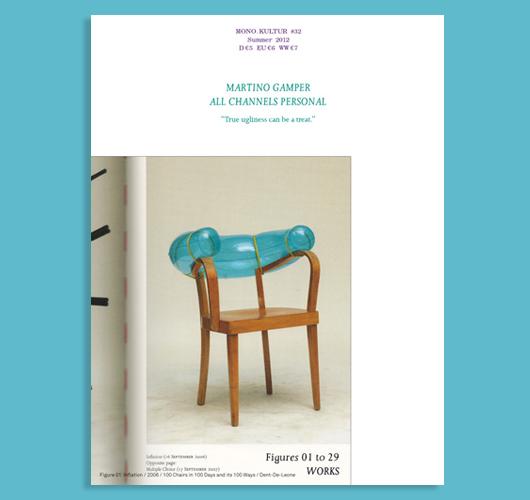
08.23.12
Excerpt: Magazine
mono.kultur #32: Martino Gamper, All Channels Personal
It took me 16 issues (Miranda July) to discover the Berlin-based magazine mono.kultur, after seeing its pull-out poster on my friend's wall a few years back. "Dear life," it read, "do you want to hang out tonight? I should warn you that I will not be wearing any make-up and my hair is dirty. If you can handle that, call me. Yours, Miranda July." Five issues later (Tilda Swinton), I was obsessed: Here was a publication that, with each issue dedicated to a single long-form interview, was less about collecting personalities for front-cover bragging rights and more about truly, painstakingly, and intimately getting to know them. Which is all any of us dream about when it comes to our cultural idols, even those of us who, from time to time, have the honor of crossing their paths ourselves. So even though we've profiled Martino Gamper on Sight Unseen before — our lovely London contributor Claire Walsh having toured his home garden and secured us his favorite pasta recipe — we still jumped at the chance to excerpt mono.kultur's new sit-down with the Italian RCA grad, who talked to its editors about his latest public design projects, his feelings about Ikea, and the use of humor in his work. The interview runs to 10,000 words and — in print — comprises three booklets hand-assembled into one exhaustive artifact that stretches far beyond the small sample presented here. After reading it, scroll down to learn how to get your own copy before it — like most of the issues this cult favorite has produced — sells out forever.
